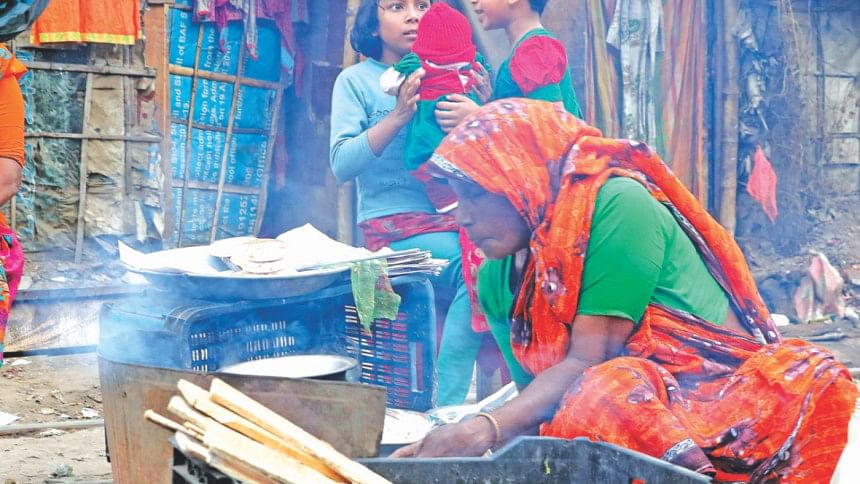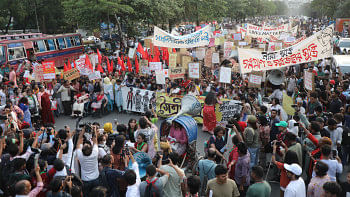Cooking stove the killer

Smoke from cooking stoves that burn coal, wood, dung, and crop residues caused the deaths of almost 18,000 people in Bangladesh in 2017, according to a global study.
The World Health Organisation says combustion from stoves contributes to heart disease, stroke, lung cancer and respiratory infections.
In 2017, 63,718 deaths were due to ambient (outdoor) PM2.5 in Bangladesh, where residential fuel use is the single largest source for PM2.5, said the study.
It said residential fuel contributed to 28.2 percent of the ambient air pollution, followed by energy with 12.4 percent.
In Bangladesh, such stoves have long posed a serious danger to women, who usually shoulder the burden of cooking, according to the Health Effects Institute (HEI) study styled "Global Burden of Disease-Major Air Pollution Sources." The study report is scheduled to be released today.
Earlier, the HEI's State of Global Air survey said particulate matter (PM) 2.5 is the sixth highest risk factor for deaths globally, accounting for nearly four million deaths in 2019.
The burning of solid biofuels, such as wood for indoor heating and cooking, is a major source of PM 2.5, accounting for an additional 740,000 deaths, especially across South Asia and Sub-Saharan Africa, the study said.
The study also finds that 770,000 deaths could have been prevented if people stop using solid fossil fuels like coal.
It said fossil fuel combustion, a major source of air pollution, contributed to more than one million deaths globally in 2017, more than 27 percent of all deaths from outdoor PM 2.5.
The report also said coal combustion alone was responsible for half of those deaths, with natural gas and oil combustion accounting for the other half.
The study team, led by Erin McDuffie and Randall Martin of Washington University in St Louis, USA, and Michael Brauer at the University of British Columbia in Canada, provide the first-ever comprehensive global analysis estimating major sources of air pollution for every country in the world.
The new report noted that major sources of PM 2.5 can vary by country and region, and different parts of the world were impacted by air pollution in different ways.
While fossil fuel combustion made up most of the PM 2.5 across the industrialised nations of the global north, windblown dust was a major source of PM 2.5 in African countries.
Dr Pallavi Pant, senior scientist of HEI, said, "To improve air quality across South Asia, it is important to consider the major sectors that are contributing to PM2.5 including energy production, residential cooking and heating, industries, transportation, waste etc., and design targeted measures to reduce emissions at source."
Abdus Salam, an air quality expert and a professor of the Department of Chemistry at Dhaka University, said cooking is one of the key concerns of indoor air pollution especially in rural areas as biomass is used widely.
"But coal is not largely used in cooking in Bangladesh," he said, adding that cooking behaviour should be changed to improve the situation.
He also said dust was another important PM 2.5 contributor that originated from construction activities, streets, as well as windblown particles.
The HEI is an independent, non-profit research institute funded jointly by the U.S. Environmental Protection Agency, industry, foundations, and development banks to provide credible, high-quality science on air pollution and health for air quality decisions.

 For all latest news, follow The Daily Star's Google News channel.
For all latest news, follow The Daily Star's Google News channel. 



Comments